Hover over images for detail:
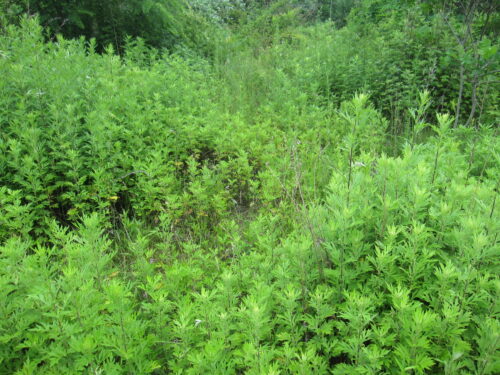
Mugwort is a very weedy perennial herb plant that quickly grows into a five-foot-high thicket by the summer. A good way to identify this plant is to turn over one of the highly lobed alternate leaves. The color is a light grey version of the upper surface.
 The underside of Mugwort Leaf
The underside of Mugwort Leaf
While the previous year’s crop disappears over the winter, it regenerates new growth along the ground from the rhizomes in early spring.

Mugwort may be confused with other plants such as our native asters or goldenrod.
 Native plant (left) and Mugwort (right) in Early Spring
Native plant (left) and Mugwort (right) in Early Spring
In the winter, carefully examine the shape and underside of any remaining dried leaves to avoid confusing the plants with goldenrods, asters, evening primrose, or unrecognizable plants until they can be properly identified.
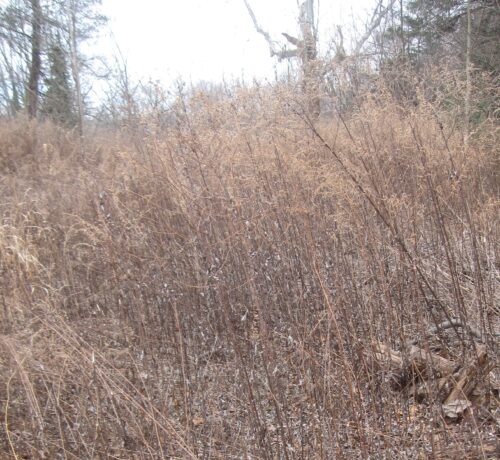
A good time to address mugwort is in the early winter when the plants are dry and brittle. First, break off and bag the seedheads for disposal, then uproot the stems during a thaw.
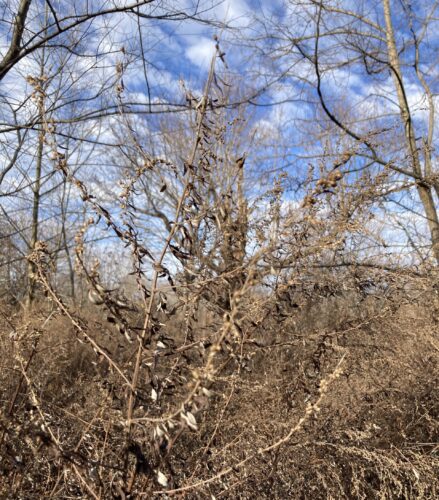
While seeds develop in late summer through early fall, they will begin to drop after a frost, a snowfall, or by mid-January. The plant tops no longer carry seeds by February. At this stage, the seeds are in the ground where a small percentage will germinate.
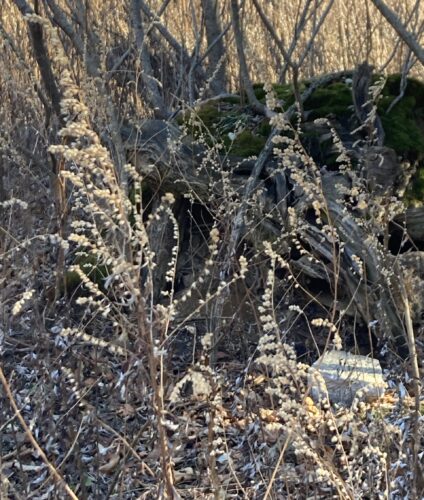
Another time to uproot this weed is after a soaking rain in early spring.

However, because new growth is primarily along the rhizome, be sure to remove the entire root. The trick is to remove the whole root, the rhizomes of which may grow to two or more feet long.
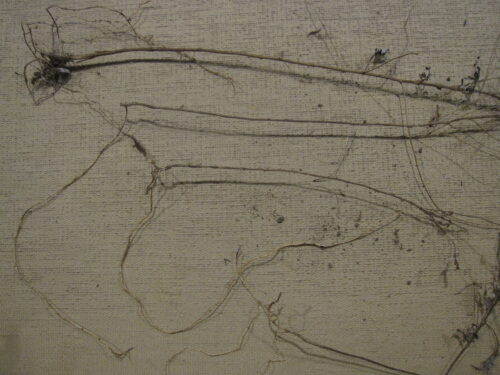 Mugwort’s Lateral Roots or Rhizomes
Mugwort’s Lateral Roots or Rhizomes
Since the rhizomes lie only an inch or two beneath the surface, they should dry above the ground. Slide a spading fork just beneath the plants, tilt the fork up then flip the dirt with the rhizomes facing up so the roots are exposed to the air to dry.

Follow up by seeding the cleared area with aggressive native plants such as switchgrass, goldenrod, common milkweed, and/or evening primrose. Trees and shrubs also inhibit mugwort growth.
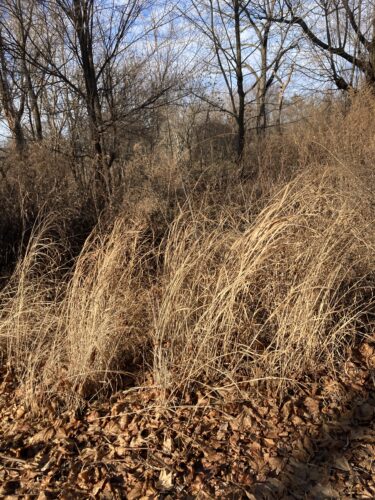
We pulled out all the mugwort plants in front and behind a park sign and laid 2 mil plastic sheeting with landscape staples. Then we covered the entire area behind the sign with four inches of wood chips. Some mugwort returned under the sign without the plastic sheeting.
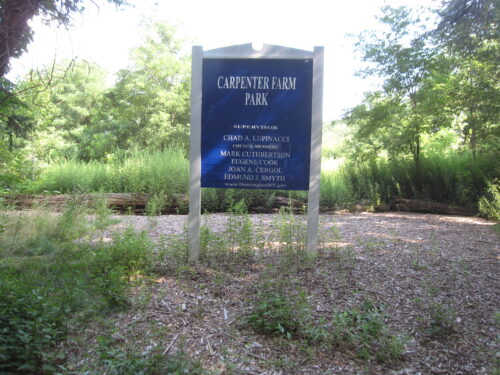
Conclusion: Black plastic sheeting plus a thick layer of wood chips successfully buried the mugwort rhizomes. Woodchips alone worked better than nothing, but not as well as with black plastic. However, the long mugwort rhizomes beneath the wood chips under the sign uprooted easily.
